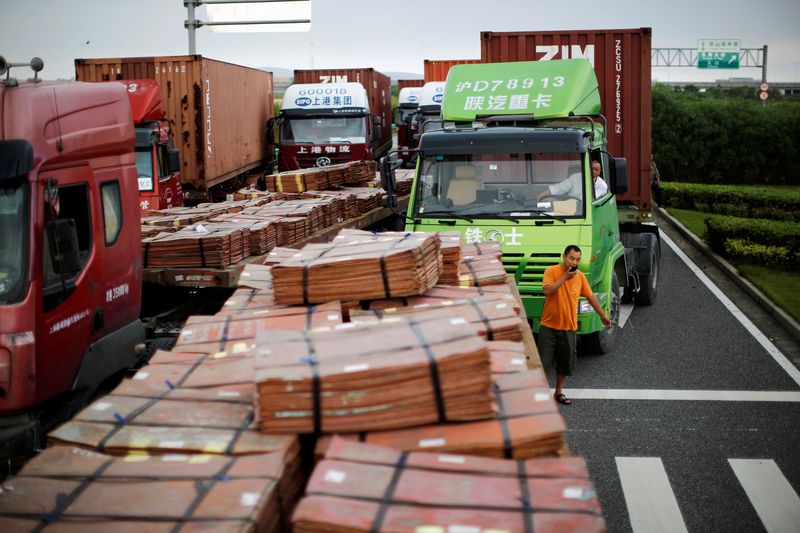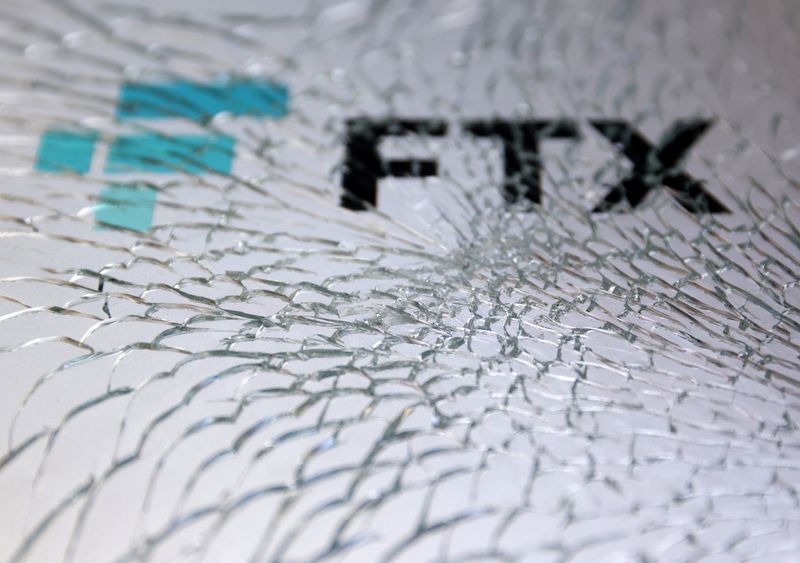Business
Russia and China trade new copper disguised as scrap to skirt taxes, sanctions By Reuters

(Corrects spelling to “Uyghur” not “Uygur”, paragraphs 2, 14)
(Reuters) -Russian Copper Company (RCC) and Chinese firms have avoided taxes and skirted the impact of Western sanctions by trading in new wire rod disguised as scrap, three sources familiar with the matter told Reuters.
Copper wire rod was shredded in the remote Xinjiang Uyghur region by an intermediary to make it hard to distinguish from scrap, the sources said, allowing both exporters and importers to profit from differences in tariffs applied to scrap and new metal, the sources said.
Russia’s export duty on copper rod was 7% in December, lower than the 10% levy on scrap. Imports of copper rod into China are taxed at 4%, and there is no duty on Russian scrap imports.
The sales of new metal disguised as scrap, which started in December, are reflected in a discrepancy between Chinese and Russian data.
Chinese customs data showed China has bought significantly more copper scrap from Russia since December, while Russian figures Reuters obtained from a commercial data provider showed the amount of scrap exported to the country’s biggest trade partner was negligible.
In response to a Reuters’ inquiry on the discrepancy, Russian customs said: “The Federal customs service temporarily does not provide data on foreign trade.” It stopped publishing trade data in April 2022 shortly after Russia’s invasion of Ukraine. Since then, the market has relied on commercial providers.
Asked about the trade in copper rod to Chinese firms, RCC, which is subject to Western sanctions, said that it supplies products only to Russian companies. It did not comment further.
China’s customs in Xinjiang, which borders Russia, did not respond to an emailed inquiry and a telephone call.
China has become a major destination for Russian companies seeking to export their commodities after the United States imposed sanctions on Russia for its invasion of Ukraine in February 2022.
The United States and the European Union have imposed sanctions on Chinese companies for supporting Russia’s war effort in Ukraine.
DISGUISE
Shredding newly-made copper wire rod is an effective way to disguise new material that looks very different to scrap.
The new, high-purity copper long, thin rods, mainly used for making power cables, are typically coiled for ease of transport.
Copper scrap, by contrast, is a mix of wires, tubes and pipes that have already been used. They are chopped into grain-sized pieces or coiled and pressed, like packs of noodles, for transport.
The shredding had escaped notice as China has restricted access to the Xinjiang region in response to international condemnation of Uyghur repression, the sources said.
Apart from the financial incentive of avoiding taxes, the shredded metal is harder to identify and trace – making it easier to sell to Chinese manufacturers.
Theoretically, there are no legal obstacles to prevent China from buying metal from Russian firms under Western sanctions, but manufacturers may still be wary of losing export business to buyers seeking to avoid providing any funds to Russia.
Sanctions can also mean difficulties with processing payments and borrowing money. The sources said some Chinese companies have set up new teams to deal with Russian-related business.
‘DE FACTO COPPER ROD’
Last December, according to a commercial data provider Chinese companies made a total of five purchases of products labelled as “copper rod” from RCC’s plant in the Urals region. The purchases made by a United Arab Emirates-based entity called Modern Commodity Trading DMCC, generated revenues of roughly $65 million, according to the commercial data provider.
The UAE-based firm could not be reached for comment.
Russia has never been a major seller of scrap copper to China.
However, from December last year, China’s copper scrap imports from Russia rose significantly, customs data showed.
Most of that, 97% or 6,434 metric tons, came through the Alashankou border of Xinjiang in December.
Russian data showed a mismatch, indicating the country sold only 73 tons of copper scrap to China in the same month.
In 2021 and 2022, an average of 95.3 tons and 125 tons of Russian copper scrap were sold to China each month.
Volumes rose sharply over the last few months with monthly imports reaching 11,599 tons by February 2024.
Customs data on Chinese imports of copper wire rod is not publicly available.
“This scrap from Russia is de facto copper rod, but not declared as rod. I cannot disclose any more detail,” said a Chinese manufacturing source who asked to remain anonymous. The source added the material could be directly consumed by copper fabricators in Jiangsu and Zhejiang provinces.
While Russian data showed minimal scrap exports, a sudden increase in wire rod exports occurred in December.
According to the data, “Kyshtym Copper Electrolyte Plant JSC,” a plant run by RCC delivered 8,041 tons of copper wire rod to China via Alashankou in Xinjiang in December compared with only 1,618 tons in November.

“As of today, Kyshtym Copper Electrolyte Plant sells its products only to domestic companies,” the Kyshtym plant said in a response to Reuters questions on its sales to China.
“We have not monitored the products’ further fate, so I have nothing to add to what has already been said.”
Business
Disney, Warner Bros. Discovery bundle streaming services

In this photo illustration the Disney+ logo seen displayed on a smartphone screen.
SOPA Images | LightRocket | Getty Images
The bundle is back.
Disney and Warner Bros. Discovery are planning to offer their streaming services — Disney+, Hulu and Max — in a bundle mirroring the traditional cable TV package, the companies said Wednesday.
The latest iteration of the bundle, which will be available this summer, will be offered on both the ad-supported and commercial-free tiers. Pricing has yet to be disclosed, but the option will be offered at a discount, according to a person familiar with the matter.
Disney will essentially act as the distributor in this case, collecting subscription fees from subscribers and paying out Warner Bros. Discovery a percentage, the person added.
This mash up of Max, Disney+ and Hulu will give streaming subscribers access to a wide breadth of content from the cable TV bundle. It’ll include broadcast networks ABC and Fox (Fox, which doesn’t have its own entertainment streaming subscription service, licenses it content on Hulu) as well as from cable networks including TNT, TBS, CNN, Discovery Channel, Food Network, Disney Channel and more.
The offering, reminiscent of the traditional cable TV bundle that has been upended in recent years and continues to bleed customers at a fast clip, is the latest partnership between the two media giants in recent months.
Warner Bros. Discovery and Disney’s ESPN, along with Fox Corp., have also joined forces to offer a sports streaming service, which is expected to launch this fall.
Earlier on Wednesday, Fox CEO Lachlan Murdoch said on an earnings call he thought the sports streaming venture would likely be bundled with other entertainment streaming services.
Disney has been offering its streaming services — Disney+, Hulu and ESPN+ — as a bundle for sometime. ESPN+ will still coexist with the sports streaming venture, but is not included in the Warner Bros. Discovery and Disney bundle. Hulu content has also been recently integrated into the Disney+ platform, though they still require separate subscriptions.
Max costs $9.99 a month with ads, or $15.99 without. Disney+’s basic tier with ads costs $7.99 per month — or bundled with Hulu, $9.99 a month — while its premium plan is $13.99 per month, or $19.99 with Hulu. Meanwhile, Hulu on its own costs $7.99 with ads, or $17.99 ad-free.
Business
FTX files amended reorganization plan, expects $14.5 billion-$16.3 billion for distribution By Reuters


(Reuters) -Crypto exchange FTX will have between $14.5 billion to $16.3 billion to pay its creditors and customers, according to an amended reorganization plan filed by the company on Tuesday in a U.S. bankruptcy court.
FTX said it has anticipated the figure based on monetizing assets, most of which were investments owned by Alameda Research, a crypto-focused hedge fund controlled Sam Bankman-Fried, FTX Ventures businesses, and litigation claims.
The amount for distribution includes assets under the control of the chapter 11 debtors, as well as those controlled by liquidators of FTX Bahamas Digital Markets, Bahamas Securities Commission, liquidators of FTX’s Australia unit, the United States Department of Justice (DOJ) and several private parties, the statement added.
The company said the amended plan focuses on a series of settlements reached consensually with the key stakeholders including cases that are still subject to court approval.
The plan put forward by FTX creates a “convenience class” for creditors with claims of $50,000 or lower, under which it anticipates that majority of the creditors will receive about 118% of the amount of their claims within 2 months if approved by the court.
“We are pleased to be in a position to propose a chapter 11 plan that contemplates the return of 100% of bankruptcy claim amounts plus interest for non-governmental creditors,” CEO John Ray said.
In February, the distressed crypto currency trading platform had $6.4 billion in cash.
Earlier this year, FTX founder Sam Bankman-Fried was sentenced to 25 years in prison by a judge for stealing $8 billion from customers.
remove ads
.
FTX, once among the world’s top crypto exchanges, shook the sector in November 2022 by filing for bankruptcy, leaving an estimated 9 million customers and investors facing billions of dollars in losses.
Business
Top lawyer denies turning blind eye on Post Office

A top barrister admitted that the Post Office should have disclosed certain information to subpostmasters.
Source link
-

 African History3 months ago
African History3 months agoBlack History Facts I had to Learn on My Own pt.6 📜
-

 African History4 years ago
African History4 years agoA Closer Look: Afro-Mexicans 🇲🇽
-

 African History1 year ago
African History1 year agoPROOF AFRICAN AMERICANS AIN'T FROM AFRICA DOCUMENTED EVIDENCE
-

 African History2 years ago
African History2 years agoHow Did Normal Medieval People Survive Winter? | Tudor Monastery Farm | Chronicle
-

 African History3 years ago
African History3 years agoThe Entire History of Africa in Under 10 Minutes – Documentary
-

 African History3 years ago
African History3 years agoWhat happened to the many African Kingdoms? History of Africa 1500-1800 Documentary 1/6
-

 African History2 years ago
African History2 years agoAFRO MEXICO: Black History In Mexico!
-

 African History1 year ago
African History1 year agoA Black African King in Medieval European Art
























